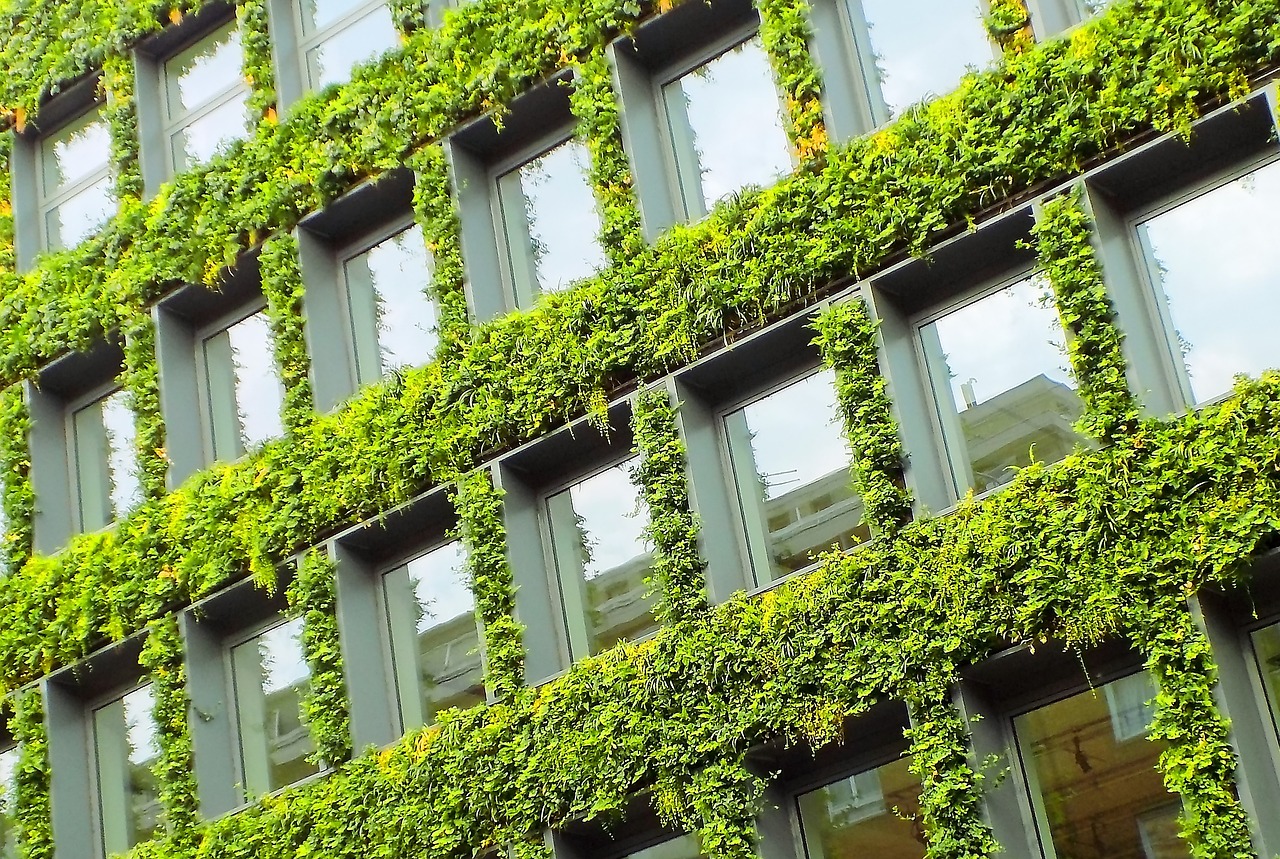In our quest to build a more sustainable future, insulation emerges as a fundamental component of eco-friendly architecture. It’s not just about keeping our homes warm in the winter and cool in the summer; effective insulation dramatically reduces energy consumption, which in turn lowers greenhouse gas emissions. By understanding how insulation materials and techniques contribute to building efficiency, we can make informed choices that benefit both our wallets and the environment. Join us as we explore the critical role insulation plays in sustainable architecture and discover how it can lead us to greener, more energy-efficient living spaces. How Does Insulation Play A Role In Sustainable Architecture?
How often do we think about the insulation in our homes, offices, or any other buildings we frequent? Likely, not very often. Yet, when we discuss sustainable architecture, insulation plays a pivotal role that cannot be underestimated. In this article, we’ll explore how insulation is not just about keeping buildings warm or cool; it’s about creating energy-efficient, eco-friendly structures that interface harmoniously with our environment.
What Is Sustainable Architecture?
Sustainable architecture aims to minimize the negative environmental impact of buildings by enhancing efficiency and moderation in the use of materials, energy, and development space. It promotes a balance between resource efficiency, environmental responsibility, and human health.
Key Principles of Sustainable Architecture
The core principles include energy efficiency, renewable energy, sustainable building materials, water conservation, and indoor environmental quality. Each of these elements works collectively to create buildings that are less impactful on our planet.
Key Principles Comparison
| Principle | Description |
|---|---|
| Energy Efficiency | Utilizing design and materials to minimize energy consumption. |
| Renewable Energy | Incorporating solar, wind, or other renewable energy sources. |
| Sustainable Building Materials | Using resources that are renewable, recycled, or efficient to produce. |
| Water Conservation | Implementing systems to reduce water usage and wastage. |
| Indoor Environmental Quality | Creating healthier indoor environments to enhance occupant well-being. |
The Role of Insulation
Insulation is a fundamental component of sustainable architecture. It significantly impacts how a building consumes energy and how comfortably it supports its occupants.
Energy Efficiency
The primary purpose of insulation is to reduce the transfer of heat between the inside and outside of a building. This reduces the need for heating and cooling systems to work as hard, thus conserving energy. Well-insulated buildings maintain a consistent temperature more effectively, reducing energy consumption.
Environmental Impact
When less energy is used for heating and cooling, fewer fossil fuels are burned, resulting in reduced greenhouse gas emissions. Thus, proper insulation can help mitigate the impact of climate change. Additionally, some insulation materials themselves are made from recycled materials or are recyclable, further enhancing their sustainability credentials.
Reduced Operational Costs
Due in large part to lower energy consumption, the cost of running insulated buildings is lower. This not only makes them more affordable over time but also adds an economic incentive for developers and homeowners to invest in better insulation.

Types of Insulation
Understanding the different types of insulation available is crucial for making informed, sustainable choices. Let’s delve into the various types:
Fiberglass Insulation
One of the most common forms, fiberglass insulation, is composed of fine glass fibers. It’s highly effective, relatively inexpensive, and easy to install. However, it has some drawbacks, such as potential skin irritation during installation and concerns surrounding the release of airborne fibers.
Foam Insulation
Foam insulation comes in several forms, including spray foam, polystyrene, and polyurethane. It provides superior air sealing properties and high thermal resistance. However, it can be more expensive and, in some cases, less environmentally friendly due to its manufacturing process and materials used.
Cellulose Insulation
Made primarily from recycled paper products, cellulose insulation is one of the more eco-friendly options available. It is treated with non-toxic fire retardants and provides good thermal performance. It can be used in various applications, including walls and attics.
Reflective Insulation
Reflective insulation consists of reflective material, usually aluminum foil, that reflects radiant heat rather than absorbing it. It’s often used in warmer climates to keep buildings cool. While less effective in colder climates, it can be used in combination with other types of insulation for a more comprehensive solution.
Types of Insulation Comparison
| Type | Composition | Pros | Cons |
|---|---|---|---|
| Fiberglass | Fine glass fibers | Cost-effective, easy to install | Installation skin irritation, airborne fibers |
| Foam | Polystyrene, polyurethane, etc. | Superior air sealing, high thermal resistance | Expensive, less eco-friendly |
| Cellulose | Recycled paper products | Eco-friendly, good thermal performance | Heavier, can settle over time |
| Reflective | Aluminum foil | Reflects radiant heat, good for warm climates | Less effective in cold climates |
How to Choose the Right Insulation
Selecting the right type of insulation for a building involves considering numerous factors, including climate, building design, and budget.
Climate Considerations
The climate plays a significant role in determining the type of insulation most suitable for a building. In colder climates, high R-value insulation (which measures thermal resistance) is essential for retaining heat. Conversely, in warm climates, reflective insulation might be more effective in keeping buildings cool.
Building Design
The design and structure of the building also influence what type of insulation is most appropriate. For instance, attics might benefit from loose-fill or blown-in insulation, whereas exterior walls might be better served by foam boards.
Budget Constraints
While it’s crucial to aim for the best possible insulation within budget constraints, it’s also essential to consider long-term savings from reduced energy costs. Sometimes, a higher upfront investment can result in significant savings down the line.

Installation and Maintenance
Proper installation and maintenance of insulation are vital to ensure it performs as expected and lasts as long as possible.
Professional vs. DIY Installation
While some forms of insulation are DIY-friendly, such as fiberglass batts, others, like spray foam, generally require professional installation. Ensuring insulation is installed correctly is crucial; improperly installed insulation can lead to gaps and inefficiencies.
Regular Inspection and Upkeep
Like any other component of a building, insulation needs regular inspection. Over time, some insulation materials can settle or degrade, reducing their effectiveness. Regularly checking and maintaining insulation helps sustain energy efficiency and comfort levels.
Insulation and Building Codes
Building codes play an essential role in ensuring buildings meet minimum energy efficiency standards, which usually means having appropriate insulation. Familiarizing ourselves with local codes and standards can help guide our insulation choices.
Energy Star and LEED Certifications
Energy Star and LEED (Leadership in Energy and Environmental Design) certifications are two well-known benchmarks. They provide frameworks for evaluating and improving the energy efficiency and environmental impact of buildings. Achieving such certifications often involves meeting stringent insulation standards.
Certification Overview
| Certification | Description |
|---|---|
| Energy Star | Focuses on reducing energy consumption, strict insulation standards. |
| LEED | Comprehensive sustainability evaluation, including insulation quality. |

Innovative Insulation Technologies
Advancements in insulation technology are continuously evolving, offering more efficient and environmentally friendly options.
Aerogel Insulation
Often regarded as one of the most effective insulators, aerogel offers superior thermal resistance while being lightweight. It’s commonly used in space applications but is making its way into commercial and residential buildings.
Phase-Change Materials (PCMs)
PCMs absorb and release thermal energy during the process of melting and freezing. When incorporated into building materials, they can enhance a building’s thermal management by storing heat during the day and releasing it at night.
Vacuum Insulation Panels (VIPs)
VIPs provide ultra-thin, highly effective insulation by using a vacuum to minimize heat transfer. They’re ideal for situations where space constraints make traditional thick insulation impractical.
The Future of Insulation in Sustainable Architecture
We are at an exciting juncture where technology, materials science, and environmental awareness converge to shape the future of insulation and, by extension, sustainable architecture.
Integrating Smart Technologies
Integrating smart technologies with insulation can lead to even greater energy efficiencies. Smart thermostats, for example, can work in tandem with advanced insulation to maximize comfort while minimizing energy usage.
Circular Economy and Insulation
In a circular economy, materials are reused and recycled to the greatest extent possible. Insulation materials that can be recycled or repurposed contribute to this sustainable model, reducing waste and resource consumption.
Future Trends in Insulation
| Trend | Description |
|---|---|
| Smart Technologies | Integration with IoT devices for optimized energy usage. |
| Circular Economy | Focus on recyclable, reusable, and sustainable insulation materials. |
Summary: Insulation’s Vital Role
In conclusion, insulation is undeniably central to achieving the goals of sustainable architecture. By choosing the right type of insulation, ensuring proper installation, and maintaining it over time, we create buildings that are energy-efficient, environmentally responsible, and cost-effective. We should prioritize insulation not just as a component of construction but as a fundamental element of our responsibility toward a more sustainable and eco-friendly future.
As we continue to innovate and adopt new technologies, the role of insulation will only grow in importance, guiding us toward a greener, more sustainable built environment.
We hope this article has shed light on the critical role insulation plays in sustainable architecture. Let’s continue to build with a vision of sustainability, ensuring our architectural practices contribute positively to the planet and our communities.